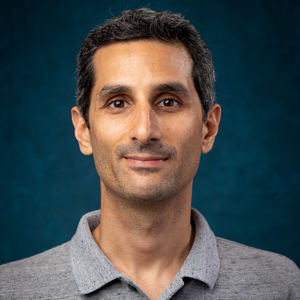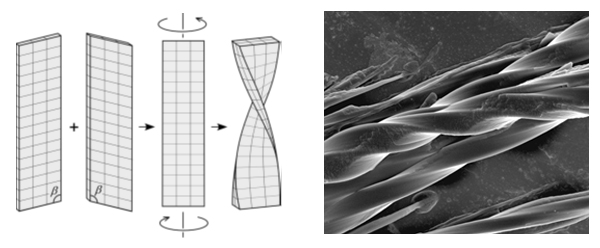Jun 5, 2020 By: yunews
 Dr. Ran Drori, assistant professor in the department of chemistry and biochemistry, has co-authored “Crystals of benzamide, the first polymorphous molecular compound, are helicoidal” in Angewante Chemie (International Edition), a journal of the German Chemical Society.
Dr. Drori was part of an international team that published the paper about twisted crystals. This effort, led by Dr. Bart Kahr from New York University, was a collaboration between researchers from New York University, Yeshiva University, Cornell University, Weizmann Institute of Science in Israel, and the University of Konstanz in Germany.
The star of the research paper is a compound called benzamide, which was the first compound found to form two different crystal structures (named polymorphs). This discovery was in 1832, but back then, it was difficult to identify that one of the crystal structures was a needle-like helicoidal crystal.
The researchers used optical and electron microscopies and electron and X-ray diffraction to investigate how and why the crystals grew in a twisted manner. They found that the crystals grow as fine needle-like structures, which include a few thin layers with mismatched crystal lattice (presented below) that creates internal stress. The stress is then relieved by twisting of the crystal.
Dr. Ran Drori, assistant professor in the department of chemistry and biochemistry, has co-authored “Crystals of benzamide, the first polymorphous molecular compound, are helicoidal” in Angewante Chemie (International Edition), a journal of the German Chemical Society.
Dr. Drori was part of an international team that published the paper about twisted crystals. This effort, led by Dr. Bart Kahr from New York University, was a collaboration between researchers from New York University, Yeshiva University, Cornell University, Weizmann Institute of Science in Israel, and the University of Konstanz in Germany.
The star of the research paper is a compound called benzamide, which was the first compound found to form two different crystal structures (named polymorphs). This discovery was in 1832, but back then, it was difficult to identify that one of the crystal structures was a needle-like helicoidal crystal.
The researchers used optical and electron microscopies and electron and X-ray diffraction to investigate how and why the crystals grew in a twisted manner. They found that the crystals grow as fine needle-like structures, which include a few thin layers with mismatched crystal lattice (presented below) that creates internal stress. The stress is then relieved by twisting of the crystal.

